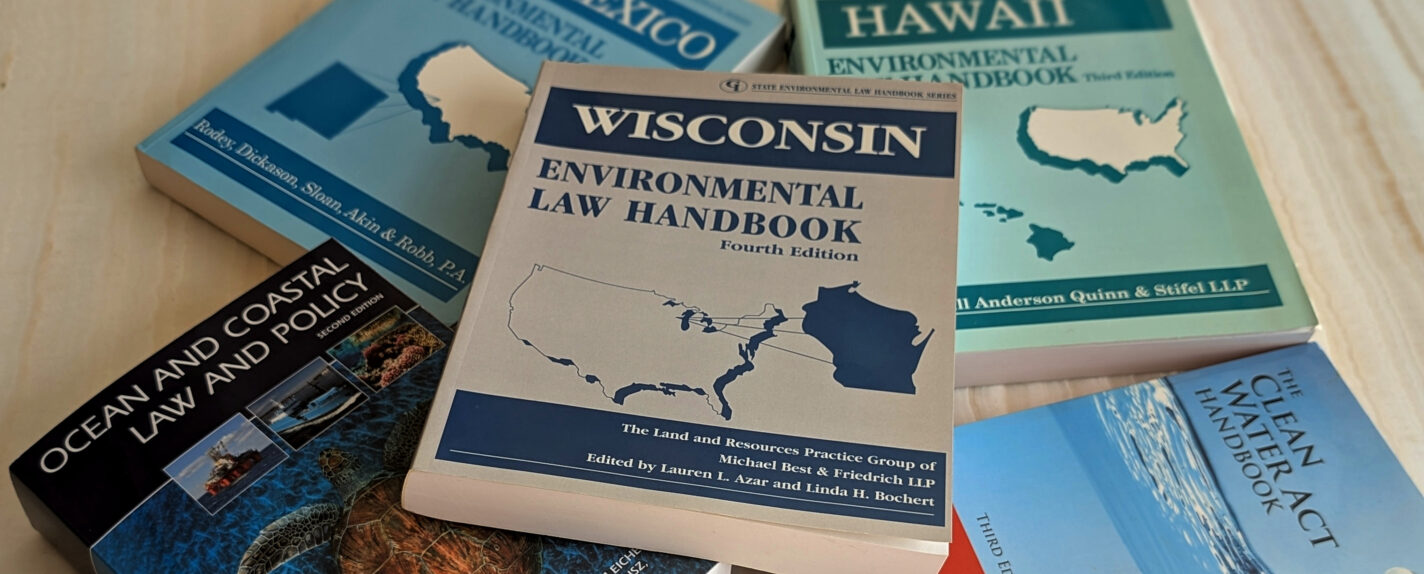State and Local Climate Laws Draw Federal Scrutiny

Newsletter Articles
Introduction
An Executive Order issued on April 8, 2025 directs the U.S. Attorney General to immediately identify and challenge in court any state or local law that addresses “‘climate change’ or involve ‘environmental, social, and governance’ initiatives, ‘environmental justice,’ carbon or ‘greenhouse gas’ emissions” or that collects “carbon penalties or carbon taxes.”1 In addition to filing litigation against state and local governments, the order, titled Protecting American Energy From State Overreach (the “Order”), directs the Attorney General to deliver a report to the White House in 60 days that identifies potential executive and legislative actions that could be used to challenge state and local climate laws.2
At least twenty states and many more cities, counties and public agencies have already enacted climate and environmental justice laws, guidelines and programs that may draw federal scrutiny and, potentially, litigation, executive and/or Congressional action under the Order. For the benefit of our readers and clients, we will use a tracker to follow the development of the federal initiatives taken under the Order.3 At a minimum, they may include laws relating to climate reporting and financial risk disclosure, climate superfund laws, cap-and-trade constructs, and renewable portfolio standards. Laws involving oil production, pipeline, and terminal permitting may also fall under the scope of the Order, along with state environmental review legislation. This article summarizes the Order and gives examples of the types of state and local climate and environmental justice laws that may come under scrutiny from federal officials from all three branches of the government.
Order Key Elements
The Order makes three directives to the Justice Department. First, it directs the Attorney General to “identify all State and local laws, regulations, causes of action, policies, and practices . . . burdening the identification, development, siting, production, or use of domestic energy resources that are or may be unconstitutional, preempted by Federal law, or otherwise unenforceable.”4 The Order prioritizes those laws that “address ‘climate change’ or involving ‘environmental, social, and governance’ initiatives, ‘environmental justice,’ carbon or ‘greenhouse gas’ emissions, and funds to collect carbon penalties or carbon taxes.”5 It lists specific examples of such policies, including climate superfund laws that have been adopted (and already challenged) in New York and Vermont, as well as California’s cap-and-trade system.
Second, the Order directs the Attorney General to “take all appropriate action to stop the enforcement of State laws” identified in the first step, presumably through litigation and perhaps other means.6 For example, it could include intervention in state court cases brought against private parties. Third, the Order directs the Attorney General to recommend “any additional Presidential or legislative action necessary to stop the enforcement of [the] State laws identified.”7 This set of recommendations will take the form of a report due in 60 days.
State and Local Law Examples
Climate Reporting and Risk Disclosure Laws in California and Washington
Several states, including California and Washington, have adopted laws requiring the disclosure of information related to climate impacts or climate risks.
Climate reporting laws require regulated entities to disclose the climate impacts arising from their operations. For example, Washington state’s Greenhouse Gas Reporting Program is designed to capture direct climate impacts from industrial activity and energy use. Under the program, “facilities” such as industrial plants, suppliers of natural gas and petroleum-based fuels, and electric power entities that emit 10,000 metric tons or more of carbon dioxide equivalent (CO2e)8 must submit annual reporting to the state’s Department of Ecology (Ecology).9 Reports must include annual emissions information broken down by greenhouse gas (GHG) emitted,10 and reporters emitting more than 25,000 metric tons of CO2e per year must have their reports verified by a third-party auditor certified by Ecology.11
California has enacted a more expansive climate reporting law. Its 2023 Climate Corporate Data Accountability Act requires all entities with total annual revenues greater than $1 billion that do business in California to submit annual GHG disclosures.12 These reporting requirements cover emissions across an organization’s value chain, from carbon emitted by direct operations (Scope 1) to indirect emissions from energy consumption (Scope 2) and upstream and downstream activities such as supplier operations and business travel (Scope 3 emissions).13 Covered entities must report on Scope 1 and Scope 2 emissions in 2026, and on Scope 3 emissions in 2027.14 The California Air Resources Board (CARB) oversees the program and CARB has been directed to publish implementing regulations by July 1, 2025.15
Another type of climate disclosure law focuses on financial risk. In California, entities with more than $500 million in total annual revenues must submit biennial reporting on all climate-related financial risks.16 Initial reports are due by January 1, 2026, must include all climate-related financial risks to covered businesses and the measures each has adopted to mitigate those risks.17 Covered businesses must make their biennial reports available to the public on their websites and deposit fees into a state Climate-Related Financial Risk Disclosure Fund set up to cover costs for CARB’s administration of the climate-related financial risk provisions.18
Other states, including New York, are considering similar legislation.19 They are already being challenged in court. The U.S. Chamber of Commerce, California Chamber of Commerce, and other business groups have filed a suit challenging the constitutionality of California’s climate reporting and financial risk disclosure measures.20 As of this writing, the district court in that case has rejected the plaintiffs’ preemption and dormant Commerce Clause challenges and is deferring decision on a First Amendment challenge pending further factfinding; a motion for preliminary injunction is pending.21
Climate Superfund Acts in New York and Vermont
The Order also targets so-called “Climate Superfund Acts.”22 Both New York and Vermont recently adopted laws that seek to hold the fossil fuel industry strictly liable for the states’ costs of addressing carbon pollution. These laws apply strict liability retroactively, akin to more traditional cleanup laws like CERCLA. Several other states, including California, Maryland, Massachusetts, and Oregon, are considering bills to create their own Climate Superfund programs.23
Vermont passed its Climate Superfund Act in May 2024. That law establishes a Climate Superfund Cost Recovery Program to be administered by a new Climate Action Office in the state’s Agency of Natural Resources.24 The office is charged with securing compensatory payments compensation from fossil fuel companies for climate-related costs incurred by the State of Vermont and its residents.25 The first step in the process is the State Treasurer’s calculation, expected by January 15, 2026, of “the cost to the State of Vermont and its residents of the emission of covered greenhouse gases” from 1995 through 2024.26 Examples of such costs include home buyouts, utility infrastructure upgrades, preventative medical care for climate-related ailments, and mitigation of ecosystem threats like algae blooms.27 The Vermont Agency of Natural Resources is charged with allocating the calculated total cost among major fossil fuel businesses in proportion to the businesses’ respective contributions to total greenhouse gas emissions during the covered period.28
In December 2024, New York passed its Climate Change Superfund Act.29 Like its Vermont counterpart, New York’s law authorizes the State’s Department of Environmental Conservation (DEC) to recover costs from the fossil fuel industry to fund “climate change adaptive infrastructure projects” such as coastal wetlands restoration, storm water drainage system upgrades, and installation of energy efficient cooling systems in public and private buildings.30 The New York law sets a $75 billion target for the total costs of such projects from 2000 to 2018.31 The DEC is tasked with making cost recovery demands to major fossil fuel businesses in proportion to their relative contributions to greenhouse gas emissions in the covered time period.32
On February 6, 2025, 22 state attorneys general and four industry groups filed suit to invalidate New York’s law.33 On December 30, 2024, the U.S. Chamber of Commerce and American Petroleum Institute sued to challenge the Vermont law.34 Both cases are ongoing and involve a variety of federal preemption and constitutional challenges.
Cap-and-Trade on the East and West Coasts
Another mechanism that several states have adopted to reduce carbon emissions are known as “cap-and-trade laws.” Under these systems, a state (for example, Oregon) sets an emissions cap and issues a quantity of emission allowance credits. Covered entities must hold sufficient allowances to account for the GHG emissions they produce. Entities can buy and sell allowances from each other based on their need for emission credits.
The first cap-and-trade program in the United States was introduced in the 1990 amendments to the Clean Air Act, which created a tradable permits market for sulfur dioxide emissions.35 In 2005, a handful of northeastern states established the Regional Greenhouse Gas Initiative (RGGI).36 The program now counts ten active participants, from Maryland to Maine, while the involvement of three additional states is currently in flux due to litigation and legislative action.37 California passed its cap-and-trade legislation in 2013, while Oregon and Washington established programs in 2021 (starting in 2022 and 2023, respectively).
California’s Cap-and-Trade Program was the first multi-sector cap-and-trade program in North America. It initially covered only electricity generators and large industrial facilities emitting 25,000 MTCO2e or more annually. Distributors of transportation, natural gas, and other fuels were covered starting in 2015. In total, the program includes approximately 450 entities making up more than 80% of statewide emissions. The program was designed to link with similar trading programs in other jurisdictions; in 2014, it linked with the Canadian province of Québec.38
Oregon’s Environmental Quality Commission (Commission) launched the nation’s second multi-sector cap-and-trade program in a 2022 rulemaking.39 The Commission updated the program in late 2024 following a state court’s determination that the regulatory process failed to comply with disclosure obligations under Oregon law.40 Washington launched its “cap-and-invest” program in 2023 as part of the Climate Commitment Act, basing it largely on California’s law.41 In November 2024, voters rejected a ballot measure that would have repealed the Act and program.42 New York is preparing a multi-sectoral cap-and-invest program, either in addition to or in lieu of its RGGI participation,43 though its timeline is uncertain.
The Original State Climate Programs: Renewable Portfolio Standards
While not directly mentioned in the Order, some of the oldest state programs to reduce carbon emissions are known as portfolio standards. These programs mandate the composition of state energy mixes and may require the use of certain quantities of renewables to power the state’s electrical grid.
The first such standard was established in Iowa in 1983, and many states adopted similar policies in the 1990s and 2000s.44 Over two dozen states and the District of Columbia now require electric utilities to deliver a certain amount of electricity from renewable or other clean electricity sources.45 Most of these requirements take the form of either a renewable portfolio standard (RPS), which requires a certain percentage of a utility’s electricity to come from renewable energy sources, or a clean energy standard (CES), which requires a certain percentage of a utility’s electricity to come from low- or zero-carbon emitting energy sources.46
These programs generally require or encourage electricity producers to supply a certain minimum share of their electricity from designated renewable resources. Eligible resources often include wind, solar, biomass, geothermal, and some hydroelectric facilities. Some programs also include “carve-outs” (requirements that a certain percentage of the portfolio be generated from a specific energy source, such as solar power) or other incentives to spur the development or maintenance of specific resources (e.g., biomass) in their standards. States active in this area set targets for specific renewable energy sources or technologies and often include interim targets with three-year compliance periods. Such states use various mechanisms to ensure compliance, such as Renewable Energy Credits (RECs) or penalties for non-compliance. RPS programs are often coupled with incentives for renewable energy generation, such as tax credits, rebates, and special RECs.47
Massachusetts48 and Hawaii49 have adopted programs that are fairly typical of a state RPS scheme. Massachusetts created the framework for its RPS through electric-utility restructuring legislation in 1997, and in April 2002, the Massachusetts Department of Energy Resources adopted RPS regulations. Retail electricity suppliers must provide a minimum percentage of sales to end-use, in-state customers from eligible renewable energy resources installed after December 31, 1997, according to a prescribed schedule (e.g., the 2025 and 2026 requirements are 27.0% and 30.0%, respectively, of sales). Eligible resources include solar photovoltaics (PV); solar thermal electric energy; wind energy; ocean thermal, wave, or tidal energy; fuel cells utilizing renewable fuels; landfill gas; certain hydroelectric energy; certain biomass energy; certain waste energy; marine or hydrokinetic energy; geothermal energy; and fusion energy. Massachusetts currently has a waste energy carveout requiring retail electricity suppliers to provide an annual percentage of sales to end-use, in-state customers from waste energy (defined as the electricity generated from the combustion of municipal solid waste) starting in 2009; since 2021, the standard is equal to 3.7% of electrical energy sales.50 Compliance is demonstrated through an annual filing that documents that the appropriate RECs have been secured, or via an alternative compliance payment where not enough RECs were procured.
Hawaii established its RPS in 2004. It functions similarly to the program in Massachusetts, with a few notable exceptions. First, certain energy savings due to energy efficiency technologies count toward the RPS, as does hydrogen produced from renewable energy sources, with no carveouts for specific sources. Second, Hawaii’s RPS currently extends until 2045, at which point 100% of utilities' net electricity sales must be from qualifying renewable energy.
Other State Laws Potentially Subject to the Order
While the Order specifically highlights laws that focus on climate change and GHG emissions, a variety of others may fall within its scope. For example, the Order may implicate State Environmental Policy Acts (SEPAs). Under a typical SEPA, states require some level of environmental review for projects with state involvement, including private projects for which the state issues permits. A subset of SEPAs cover local governments as well as state governments, such that zoning and other local land use decisions also require environmental review.51 More significantly, several states, including California,52 Massachusetts,53 Minnesota,54 and New York55 require mitigation of adverse environmental effects identified in environmental reviews. SEPA reviews and mitigation can add years of delay and substantial costs to projects, slowing the development of both traditional and renewable energy projects.56
Other state laws that may come under federal review include pre-construction permits and other approval requirements under water, air, and land management laws. As an example, states can—and have—used the Clean Water Act (CWA) to stop or delay energy projects, a “practice” that may also fall within the Order’s ambit. CWA Section 401 provides that a party seeking a license or permit from a federal agency for a project that “may result in any discharge into the navigable waters” must apply for a water quality certification from the State “in which the discharge originates.”57 These Section 401 certifications can effectively give individual States veto power over interstate infrastructure projects, such as natural gas pipelines or electric transmission lines. It remains to be seen how collateral processes like these will be approached under the Order, as well as whether the passages in the Order referencing “environmental, social, and governance initiatives” and “environmental justice” are treated by the Attorney General as subsumed within the Order’s general focus on energy projects.
Conclusion
While much will be determined by the Attorney General’s approach to implementing this Order, it seems likely to test the cooperative federalism that has animated environmental law since its founding. Of interest are the role that private companies, Indian Tribes and environmental groups will play in any litigation, agency action or legislation undertaken pursuant to the Order.
For more information on the State Climate Law Executive Order, please contact any of the authors or any of the environmental professionals who practice at Marten.
The authors would like to thank several reviewers who assisted the authors in writing this article, including: Jessica Ferrell and Scott Fulton.
1 The White House, Protecting American Energy from State Overreach at § 2(a), (Apr. 8, 2025). https://www.whitehouse.gov/presidential-actions/2025/04/protecting-american-energy-from-state-overreach/.
2 Id. § 2(c).
3 If you are interested in the opportunity to develop and maintain the tracker, please contact Zachary Zahner or Victor Xu.
4 See supra note 1, § 2(a).
5 Id.
6 Id. § 2(b).
7 Id. § 2(c).
8 CO2e is a standardized metric used to compare emissions from various GHGs based on their climate warming potential.
9 WAC 173-441-030.
10 WAC 173-441-050.
11 WAC 173-441-085.
12 Cal. Health and Saf. Code § 38532(b)(2); see also Emma L. Lautanen & James B. Pollack, California Adopts Sweeping Climate Disclosure Laws, Marten Law (Jan. 8, 2024), https://martenlaw.com/news/california-adopts-sweeping-climate-disclosure-laws.
13 Cal. Health and Saf. Code §§ 38532(b)(3-5).
14 Id. § 38532(c)(2).
15 Id. § 38532(c)(1).
16 Id. § 38533(b)(1).
17 Id.
18 Id. § 38533(c).
19 S.B. 3456 2025-26 Leg., Reg. Sess. (N.Y. 2025); S.B. 3697 2025-26 Leg., Reg. Sess. (N.Y. 2025).
20 U.S. Chamber of Commerce v. CARB, No. 2:24-cv-00801 (C.D. Cal. Jan. 30, 2024).
21 Id.
22 See generally Daniel F. Mulvihill & Victor Y. Xu, State Climate Superfund Laws Head to Court, Marten Law (Feb. 18, 2025), https://martenlaw.com/news/state-climate-superfund-laws-head-to-court.
23 Massachusetts, 194th Regular Sess., S.D.1674, https://malegislature.gov/Bills/194/SD1674/Senate/Bill/Text; SB 682, 83rd Or. Leg. Assembly, 2025 Regular Sess., https://olis.oregonlegislature.gov/liz/2025R1/Downloads/MeasureDocument/SB682; California Legislature, 2023-2024 Regular Sess., SB-1497 Polluters Pay Climate Cost Recovery Act of 2024, https://leginfo.legislature.ca.gov/faces/billTextClient.xhtml?bill_id=202320240SB1497; Maryland General Assembly, 2024 Regular Sess., SB 958, Responding to Emergency Needs From Extreme Weather (RENEW) Act of 2024, https://mgaleg.maryland.gov/mgawebsite/Legislation/Details/SB0958?ys=2024RS.
24 Vt. Stat. Ann. tit. 10, § 597.
25 Id. § 597.
26 Id. § 599c.
27 Id. § 596(2).
28 Id. § 598(b).
29 N.Y. Env’t Conserv. Law §§ 76-0101 - 76-0105.
30 Id. § 76-0101(3).
31 Id. § 76-0101(6).
32 Id. § 76-0103(3).
33 Complaint, State of West Virginia, et al. v. James, et al., No. 25-cv-168-BKS-DJS) (N.D.N.Y. Feb. 6, 2025).
34 Complaint, Chamber of Commerce of the United States of America, et al., v. Moore, et al., No. 24-cv-01513 (D. Vt. Dec. 30, 2024).
35 42 U.S.C. §§ 7651 et seq.
36 RGGI, Elements of RGGI, https://www.rggi.org/program-overview-and-design/elements (last visited Apr. 10, 2025). Massachusetts later implemented regulations to establish an additional cap-and-trade program for its power sector that runs in parallel with RGGI but extends out to 2050.
37 Pennsylvania’s participation via executive order was struck down by the state’s intermediate appellate court in November 2023 as an unconstitutional tax. Bowfin KeyCon Holdings, LLC v. Penn. Dep’t of Env’t Prot., No. 237 M.D. 2022 (Pa. Comm. Ct. 2023). The governor’s appeal is currently pending before the Supreme Court of Pennsylvania. Virginia joined the initiative in 2020, then its air pollution control board voted to leave the initiative in 2023. Late last year, a state court ruled that the board did not have withdrawal authority without legislative approval, but that ruling was stayed last month pending appeal. Niina Farah, Court freezes order on Virginia’s RGGI exit, E&E News, https://subscriber.politicopro.com/article/eenews/2025/03/10/court-freezes-order-on-virginias-rggi-exit-00218715 (Mar. 10, 2025). North Carolina's entrance into RGGI has been blocked by the enactment of the state's fiscal year 2023–25 budget. Abbie Bennett, $30B NC budget would restrict several carbon reduction tools, S&P Global (Sept. 29, 2023), https://www.spglobal.com/market-intelligence/en/news-insights/articles/2023/9/30b-nc-budget-would-restrict-several-carbon-reduction-tools-77668175.
38 CARB, Overview of ARB Emissions Trading Program, https://ww2.arb.ca.gov/sites/default/files/cap-and-trade/guidance/cap_trade_overview.pdf (Feb. 9, 2015).
39 OAR ch. 340, div. 273; see generally Oregon DEQ, Climate Protection Program Fact Sheet, https://www.oregon.gov/deq/ghgp/Documents/cppOverviewFS.pdf (last visited Apr. 10, 2025).
40 A. Baumhardt, Oregon commission approves redo of landmark climate program after lawsuit derailed it, Oregon Capital Chronicle (Nov. 21, 2024), https://oregoncapitalchronicle.com/2024/11/21/oregon-commission-approves-redo-of-landmark-climate-program-after-lawsuit-derailed-it/.
41Chapter 316, Laws of 2021 (Senate Bill 5126). Wash. Dep’t of Ecology, Climate Commitment Act, Climate Commitment Act - Washington State Department of Ecology (last visited Apr. 10, 2025).
42 J. Cornfield, Voters reject measure to repeal landmark Washington climate law, Washington State Standard (Nov. 5, 2024), https://washingtonstatestandard.com/2024/11/05/voters-rejecting-measure-to-repeal-landmark-washington-climate-law/.
43 New York State, Clean Air Initiative, https://capandinvest.ny.gov/ (last visited Apr. 10, 2015).
44 See, e.g., Cong. Res. Serv., A Brief History of U.S. Electricity Portfolio Standard Proposals (updated Feb. 24, 2021).
45 See, e.g., N.C. Clean Energy Technology Center, Renewables Portfolio Standard Programs, https://programs.dsireusa.org/system/program?type=38& (last visited Apr. 10, 2025).
46 See, e.g., U.S. Energy Information Admin., Renewable energy explained: Portfolio Standards, https://www.eia.gov/energyexplained/renewable-sources/portfolio-standards.php (last updated July 30, 2024).
47 See, e.g., id.
48 M.G.L. ch. 25A, § 11F; 225 CMR 14.00; 225 CMR 15.00.
49 HRS 269-91 et seq.
50 Massachusetts also had a solar carve-out from 2010-2020, requiring a portion of the required renewable energy from qualified in-state, interconnected solar facilities.
51 See, e.g., Richard L. Revesz, Federalism and Environmental Regulation: A Public Choice Analysis, 115 Harv. L. Rev. 553, 617-20 (2001).
52 Cal. Pub. Res. Code § 21,002.1(b); see also Ukiah Citizens for Safety First v. City of Ukiah, 248 Cal. App. 4th 256 (2016).
53 Mass. Gen. Laws ch. 30, § 61.
54 Minn. Stat. § 116D.04(6).
55 N.Y. Env’t Conservation Law § 8-0109(1); see also Jackson v. New York State Urban Development Corp., 494 N.E.2d 429 (N.Y. 1986).
56 See, e.g., Hilltop Grp., Inc. v. Cnty. of San Diego, 99 Cal. App. 5th 890 (2024) (discussing a CEQA process that spanned nearly a decade before reaching state court).
57 33 U.S.C. § 1341(a)(1).
Newsletter Articles
Authors
Authors
Stay Informed
Sign up for our law and policy newsletter to receive email alerts and in-depth articles on recent developments and cutting-edge debates within our core practice areas.



